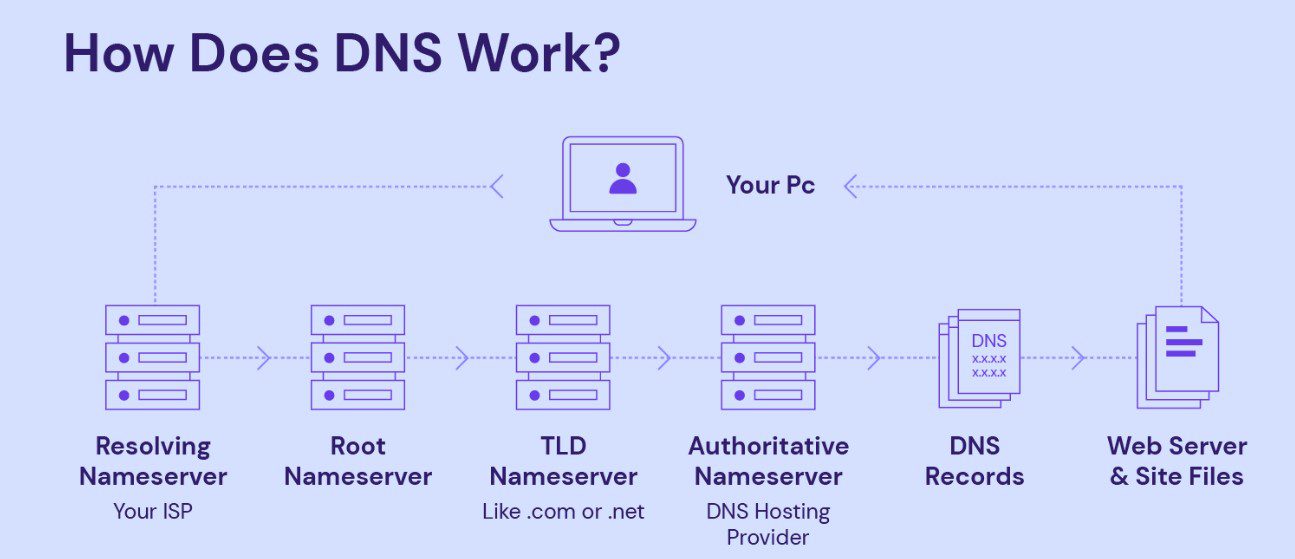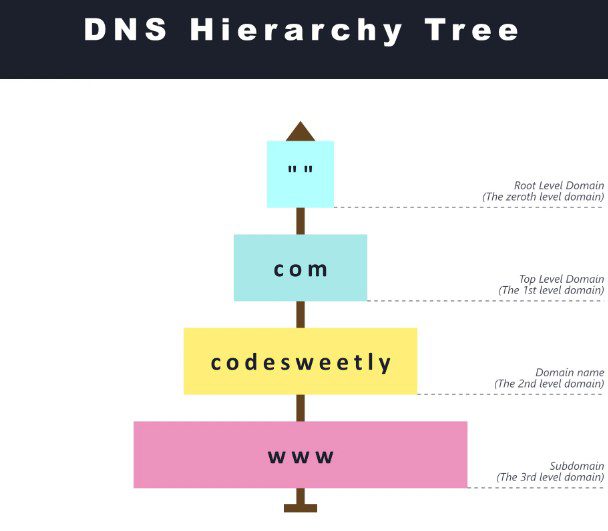Blogs
Home / Blog


From the foundational Root Level to the intricate Sub-Domains, we will explore the structure that underpins the functioning of the DNS. Understanding this hierarchy is essential for anyone seeking insights into the backbone of how we access information on the World Wide Web.
DNS, or the Domain Name System, is a global network that translates user-friendly domain names into numerical IP addresses used by computers to identify websites on the Internet. The DNS hierarchy consists of servers that collectively form a massive global database.

DNS servers, which also function as web servers, play a crucial role in this translation process, converting domain names entered into web browsers into corresponding IP addresses.
A Fully Qualified Domain Name (FQDN) is a DNS-related term that pinpoints a domain’s precise location in the hierarchy. It consists of a host name and domain name, such as “mail.mydomain.com.” Fully Qualified Domain Name offers a definitive and unambiguous method for specifying Internet resource locations. By including both the host and domain names, like “mail” and “mydomain.com,”
Fully Qualified Domain Name facilitates accurate resource identification. In essence, they provide a clear pathway for navigating the Internet’s distributed network. Using Fully Qualified Domain Name ensures precise communication and resource retrieval, contributing to the overall efficiency and reliability of online interactions.

There are five levels of DNS hierarchy.
The DNS hierarchy originates at the Root Level, housing the DNS root zone managed by authoritative root name servers. These servers are pivotal in redirecting requests to the appropriate Top-Level Domain (top level domains) name servers, marking the commencement of the translation process from human-readable domain names to IP addresses. The Root Level represents the apex of the domain naming system, playing a foundational role in facilitating the initial step in the domain resolution process.
Situated just below the Root Level, Top-Level Domains (top level domains) constitute the subsequent tier in the DNS hierarchy. Examples include widely recognized extensions such as .com, .net, and .org, each reflecting organizational hierarchy or geographic distinctions.
Top level domain name servers exert authority over these domain extensions, offering critical information regarding Second Level Domains within their respective realms. Top level domains are integral components that contribute to the hierarchical structure of domain names, signifying organizational or geographic affiliations.
Directly beneath top level domains, Second Level Domains (second level domains) form the subsequent layer in the DNS hierarchy. These domains are specific to organizations or entities and serve as primary identifiers within web addresses.

Managed through domain registrars, second level domains are under the administration of the organization or individual to whom they are assigned. Examples include “example” in “example.com,” and second level domains play a crucial role in organizing and categorizing content within the domain.
Within the structure of Second Level Domains, the DNS hierarchy further extends to Sub-Domains. These Sub-Domains allow for additional organizational structuring of a website, enhancing flexibility in design and content management. An illustrative example is found in “blog.example.com,” where “blog” serves as a Sub-Domain of “example.com.” Sub-Domains provide a means of categorizing content under broader domains, contributing to effective organization and management.
The host section of the fully qualified domain is used to identify a particular device, usually a dedicated server.
The DNS hierarchy relies on 13 distributed Root Zone servers globally, contrary to a single point depiction. Appointed by ICANN, entities like Verisign and NASA operate these servers. They play a crucial role in resolving domain names to IP addresses. The geographical dispersion and redundancy of these servers enhance the resilience and efficiency of the DNS system.
To facilitate the widespread awareness of the Root Zone servers, host names and corresponding IP addresses are hardcoded into DNS software and distributed to hosts and resolvers. The 13 root servers, identified by host names like a.root-servers.net to m.root-servers.net, are managed by diverse organizations, including government entities, educational institutions, and private companies.
This hard coded information serves as the initial reference point for DNS resolution, enabling hosts and resolvers to initiate the process of querying authoritative servers to ultimately translate domain names into IP addresses. The intentional distribution and redundancy of these root servers contribute to the stability and reliability of the global DNS infrastructure.
Did this article help you in understanding the DNS hierarchy? Share it with us in the comments section below.
Enter your email to receive the latest news, updates and offers from HostNoc.
